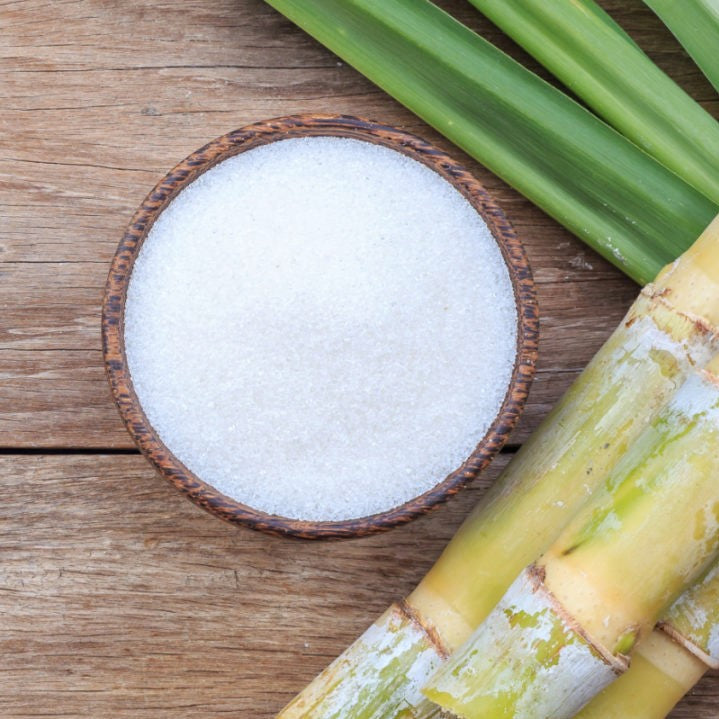Cane Sugar Processing: From Field to Table-- A Step-by-Step Guide
Cane Sugar Processing: From Field to Table-- A Step-by-Step Guide
Blog Article
A Comprehensive Overview to the Ecological Effect and Sustainability Practices in Cane Sugar Handling
The environmental influence of cane sugar processing presents a complex array of difficulties that warrant careful exam. From soil degradation and extreme water usage to the carbon impact associated with cultivation and production, the consequences of typical methods are significant. What particular methods can be executed to strike a balance between performance and environmental stewardship?
Summary of Walking Stick Sugar Processing
Cane sugar processing entails a series of systematic steps that change sugarcane into refined sugar. Initially, gathered sugarcane is moved to refining centers, where it goes through cleaning up to eliminate soil and particles. Following this, the cane is squashed to remove juice, which is after that clarified by eliminating contaminations with heating and the enhancement of lime.
The cleared up juice undergoes evaporation, where water is gotten rid of to concentrate the sugar content. These crystals are separated from the remaining syrup utilizing centrifugation, resulting in raw sugar.
The end product is then dried out and packaged for distribution. Throughout this entire process, maintaining efficiency and top quality control is vital to guarantee the sugar meets industry requirements. Each action in walking stick sugar processing not just adds to the last item yet also has effects for source usage and waste generation, establishing the stage for conversations on sustainability and ecological influences connected with sugar production.
Ecological Challenges of Manufacturing
The manufacturing of walking cane sugar presents a number of substantial environmental challenges that warrant focus. One key concern is the substantial use agrochemicals, including fertilizers and chemicals, which can bring about soil destruction, biodiversity loss, and contamination of local water sources. The drainage from sugarcane fields often brings these chemicals into nearby communities, interfering with water life and influencing the health and wellness of neighborhoods reliant on these water bodies.
One more obstacle is the high power consumption associated with sugarcane handling. The boiling and refining phases call for substantial heat, mostly produced by burning fossil fuels, adding to greenhouse gas emissions. In addition, the large acreage required for sugarcane farming can bring about logging and environment damage, additional aggravating environment modification and harmful wildlife.
Moreover, the labor practices in some areas elevate moral issues, as workers may face inadequate working problems and inadequate incomes. This circumstance often bolsters a cycle of poverty in regional communities. Cane Sugar Processing. Attending to these environmental challenges is critical for establishing more sustainable methods in cane sugar manufacturing, ultimately benefiting both the atmosphere and the neighborhoods entailed in this industry
Water and Land Usage Impact
Water sources and land utilization are crucial components in the cane sugar industry that substantially affect the atmosphere. The growing of sugarcane calls for significant water input, with price quotes suggesting that it can consume approximately 2,000 liters of water per kilo of sugar created. This extensive use water often brings about deficiency of regional water sources, impacting not just the sugarcane vineyards but likewise bordering communities and communities that depend on the very same water sources for farming and residential use.

In addition, land use for sugarcane cultivation can result in deforestation and the conversion of natural habitats into monoculture vineyards. This technique diminishes biodiversity, interrupts neighborhood ecosystems, and adds to dirt destruction. The development of sugarcane areas often intrudes on important farming land, producing competitors for sources between food and biofuel manufacturing.
Lasting methods, such as enhancing irrigation techniques and executing crop rotation, are vital to reduce these impacts. By taking on a lot more effective water usage and land monitoring methods, the walking stick sugar sector can reduce its environmental impact, making certain a balance between farming productivity and environmental conservation.
Greenhouse Gas Emissions
Greenhouse gas exhausts stand for a considerable environmental concern within the walking cane sugar processing sector, especially as farming methods broaden to fulfill global need. The cultivation of sugarcane, a plant that flourishes in exotic climates, depends greatly on synthetic fertilizers and pesticides, which contribute to laughing gas exhausts. Furthermore, land-use changes, consisting of deforestation for new sugarcane haciendas, release co2 kept in greenery and soil.
Throughout handling, power intake is an additional significant resource of greenhouse gas exhausts - Cane Sugar Processing. Lots of sugar mills utilize nonrenewable fuel sources to power machinery and create warmth, leading to substantial carbon impacts. Furthermore, the transportation of raw sugarcane and ended up products includes layers of discharges via fuel combustion dig this in vehicles
This entails examining present agricultural practices, refining methods, and transportation systems to determine areas for renovation and reduction. Attending to greenhouse gas exhausts is crucial for promoting an extra lasting cane sugar sector in a changing environment.

Lasting Practices and Innovations
Lasting methods and innovations are significantly important in the cane sugar processing sector as stakeholders look for to reduce ecological effects while keeping productivity. One considerable innovation is the implementation of incorporated crop administration, which maximizes source use by incorporating dirt management, pest control, and plant turning methods. This approach enhances yield while lessening chemical inputs and preserving soil health and wellness.
Additionally, the adoption of renewable resource resources, such as biomass from sugarcane deposits, has actually acquired traction - Cane Sugar Processing. By transforming waste products right into energy, processing centers can lower their dependence on nonrenewable fuel sources, thus decreasing greenhouse gas discharges
Water monitoring techniques have actually also seen improvements with the recycling and reusing of water in processing plants, significantly reducing freshwater consumption. Innovations in modern technology, such as precision farming, make it possible for farmers to check crop health and resource usage better, guaranteeing lasting cultivation techniques.
Furthermore, accreditation programs like Fair Trade and Rain forest Alliance encourage eco responsible farming methods and advertise social equity within the supply chain. By embracing these sustainable techniques and advancements, the walking cane sugar handling industry can improve its durability and contribute positively to environmental stewardship.
Final Thought
The ecological effect of walking stick sugar processing provides considerable challenges, consisting of dirt deterioration, high water intake, and greenhouse gas exhausts, along with ethical concerns connected to labor practices. Dealing with these issues with lasting practices, such as incorporated page crop administration, eco-friendly energy adoption, and water recycling, is necessary. By promoting eco responsible and socially equitable approaches in sugar production, the market can mitigate its adverse impacts, guaranteeing a much more sustainable future for both areas and communities entailed in this field.
Cane sugar processing entails a series of systematic actions that transform sugarcane into polished sugar. Each action in cane sugar handling not only adds to the final product yet likewise has implications for resource usage and waste generation, establishing the stage for conversations on sustainability and environmental impacts connected useful site with sugar manufacturing.
Greenhouse gas exhausts stand for a significant environmental problem within the cane sugar handling market, specifically as farming methods broaden to fulfill global need.Sustainable practices and advancements are progressively important in the cane sugar processing market as stakeholders look for to reduce environmental effects while keeping productivity.The environmental effect of cane sugar processing presents considerable obstacles, including dirt degradation, high water intake, and greenhouse gas exhausts, along with honest worries associated to labor methods.
Report this page